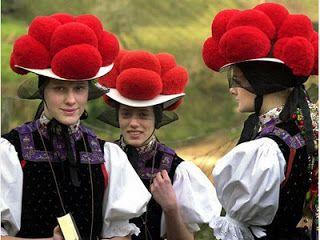AK1,
I am from Perlacher Forst (no "e") district of München (you know as Munich,) Germany. This is the capital of Bayern, the most southeastern state near the Czech Republic and Austria. I spent a lot of time as a child in Schwarzwald (known to you as the Black Forest). We went there picking wild blueberries and mushrooms. The high-bush blueberry was introduced to Schwarzwald from the Americas in the 1930s. Schwarzwald is in the south in the other southern state of Germany, Baden-Württemberberg. It neighbors Die Schweiz (Switzerland) and France.
Germany has 60 percent coniferous (evergreen) and 40 percent deciduous forests (trees which part their leafs in autumn). The coniferous trees found in southern Germany are mostly Spruce. Spruce constitutes 28 percent of the total forest in Germany, followed by Pine 23 percent, Beech trees 15 percent, and Oak trees 10 percent, with 24 percent being a mix of others like Fir, Willow, Popular, and old Redwoods. The trees in the northern part of Germany are mostly small Pine. The cooking styles, foods, and even types of clothing are very different in each region.
People think of Dirndl dresses and lederhosen as being typically Germany. They are not, this is specifically Bayerisher (what you call Bavarian) where I am from. Next door in Baden-Württemberg the traditional dress is very different. (See attached photograph) Both in Bayern and Baden-Württemberg it is very common to use Spruce cones to cook meat, however, it is only with Spruce cones, not pine, fir, etc. If one uses wet cones, they will produce a lot of carbon smoke and water vapor. The water vapor makes the carbon clings to food. Thus, cones are gather months in advance and stored in large burlap bags, then dried before using. Cones are stacked high and lit until the are white. Then they are spread evenly to fill the bottom of the cooking pit. Generally, a lot of cones are used, compared to the amount of charcoal in the USA and Canada. Cones are not added by wise people, while food is cooking. The hot bed is prepared, then cooking is done on cones, now turned to coals, which simmer down and slowly burn out. The smoking part occurs before the cones turn white, so there is an art to doing this. There is some benzopyrene produced, but most of it is volatile and emitted in the initial phase before the coals are ready for cooking. Cooking is mostly done in an open metal container, on Welded Steel Bar Grate, which has ventilation. Unlike Pine, Spruce imparts very little flavor to the process. Additionally, meat is only cooked until it is done. In Northern America it seems to be common to cook foods on very higher temperatures until there is black showing on some, or at some barbecues I attended, all over the meat. Meat cooked in Germany on Spruce coals is at a much lower temperature and the meat is not served if it is blackened. The black part contains the majority of proteins, which under high-heat convert these chemicals to those containing carcinogens. So, from this perspective, it is healthier to cook on Spruce cones, though Germans also eat far too much red meat.
The other comment I saw concerned Juniper berries. They are eaten, but not too often and mostly only from Juniperus Communis. There are many types of Juniper trees, all which have berries, but some like Juniperus Sabina are toxic. Thus, one should be careful about eating Juniper berries.
It is common in Bayern, Bohemia, and Moravia to eat cumin on potatoes which resemble Caraway, and Caraway on breads and Sourkraut. The seed spices Cumin, Dill, Anise, Fennel, and Caraway are all closely related members of the Parsley family (Apiaceae), and are widely used in Central and Eastern Europe cuisines along with some spices mostly unknown in the Americas like Fenugreek and Bärlauch, witch I believe is called Buckrams in American English. It makes an incredible soup, but only in April or early May to serve with those BBQ brats and cool, not cold Hefeweizen.








